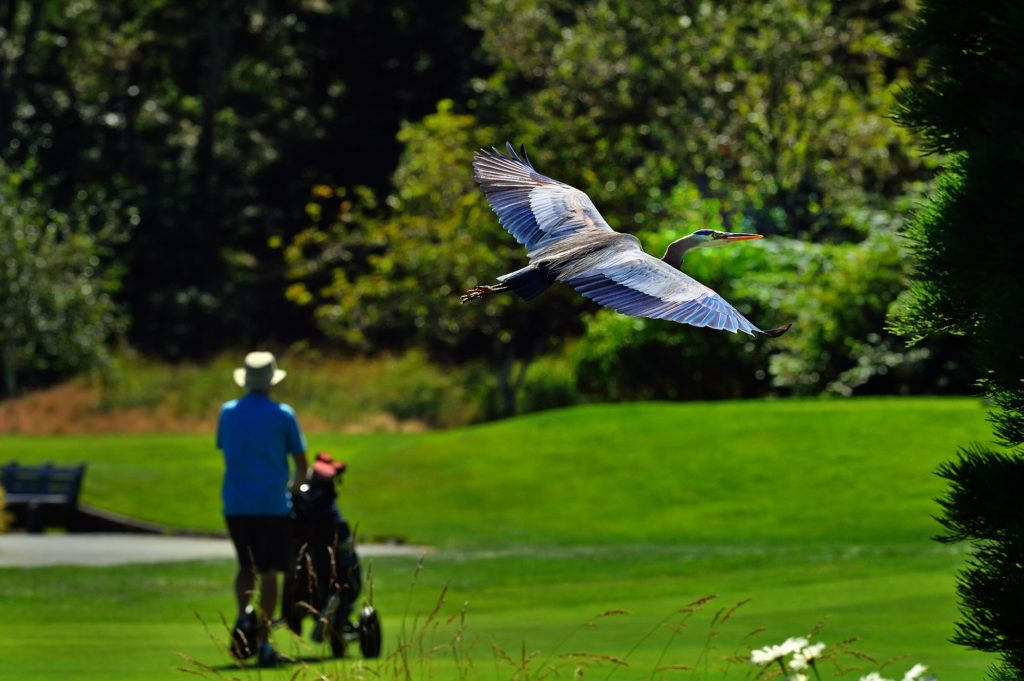The Audubon Cooperative Sanctuary Program for Golf
Audubon International
NGF Member #1406305
NGF’s diverse and extensive membership roster features organizations, businesses, associations and individuals from all corners of the golf industry.
This series engages our membership for information and insight on their particular position within the golf world and the “why” and “what” of their efforts.
________________________________________________________________________________________________________
By Frank LaVardera
Director of Environmental Programs for Golf at Audubon International
The relationship between the golf industry and environmentalists is, shall we say, complicated.
On the surface, it appears that golf courses are antithetical to saving the climate, due to the use of water and chemicals, as well as potential harm to native plants, wildlife and other surroundings. But, the truth is, in order for a golf course to look as plush as Augusta National, it doesn’t have to be a staunch enemy of Mother Earth.
In fact, the two can work hand in hand. There are well over 2,000 golf courses – ranging from your local municipal to some of the most renowned layouts in the world – that are already putting major efforts and resources toward being “green” in more ways than simply having immaculate fairways and greens.
These courses are part of the Audubon Cooperative Sanctuary Program (ACSP) for Golf, an award-winning education and certification program that was created to aid golf courses in enhancing valuable natural areas and wildlife habitats, improving efficiency, and minimizing potentially harmful impacts of operations. Roughly half of these member courses have fully demonstrated a commitment to environmental stewardship by completing a multifaceted certification process that, in addition to saving the environment, helps members cut their agronomic budgets, as well as receive positive recognition and praise from their communities, members and players.
The process is relatively seamless and inexpensive (annual member fee is $500). It is more than likely that your course is already implementing many of the things required to be certified, so it’s rare for us to see courses that need to make wholesale changes or large investments in new equipment or technology to meet certification standards. The key is to take each step one at a time rather than letting yourself become overwhelmed by the entire task. A course does not need to cover a large amount of acreage or contain a lot of habitat area to get certified – it just needs to practice good environmental management and we guide you through each step of the way.
An Audubon International representative visits the course to review technical components and provide guidance surrounding six environmental components:
- Site Assessment/Environmental Planning
- Wildlife and Habitat Management
- Chemical Use Reduction and Safety
- Water Conservation
- Water Quality Management
- Outreach and Education
Recertification is required every three years and we conduct a repeat site visit at every certified course once every six years.
We’re proud to say that, according to our member surveys, 99% of certified courses report that turf quality remained the same or even improved as a result of employing our suggested best practices and most say they have saved as much as 15% on their maintenance and management budget. Even more impressive is the fact that 80% decreased the amount of managed turfgrass and 56% increased the width of “no-spray zone” around water features.
As important as it is to carry through and accomplish all of the best practices above, outreach and education is an equally important part of the certification process. Once golfers understand why certain steps are being taken – such as grass being kept higher around ponds and streams to buffer nutrient runoff – they are more likely to embrace the changes. An Audubon International survey found that golfer satisfaction had either improved (66%) or been maintained (34%) since their course joined the ACSP for Golf.
Yes, it’s true you can be “green and great” at the same time and we have proven that securing an Audubon International certification is a win-win for all parties involved, particularly Mother Earth.

Ozarks National at Big Cedar Lodge in Branson, Missouri, where all five golf courses are designated as Audubon International Signature Sanctuary locations.
________________________________________________________________________________________________________
As the Director of Environmental Programs for Golf, Frank LaVardera oversees AI’s highly regarded Audubon Cooperative Sanctuary Program for Golf as well as the Signature and Classic Sanctuary programs for new and renovating golf courses. His department also includes the organization’s conservation programs – Monarchs in the Rough, the Raptor Relocation Network and BioBlitz. LaVardera is an environmental professional with over 40 years of experience. Prior to joining Audubon International, he spent 36 years as an environmental consultant helping governmental, military, industrial and commercial clients navigate the world of environmental regulations and compliance. This experience included site assessments, facility planning and permitting, remediation, and the design of environmental impact mitigation systems. He has been a guest speaker at numerous golf related seminars and trade shows talking about environmental sustainability related to the operation and maintenance of golf courses. He holds a Master of Science degree in Urban and Environmental Studies from Rensselaer Polytechnic Institute and a Bachelor of Science in Land & Water Resources from Ramapo College of New Jersey.
_____________________________________________________________
Want to be better informed, grow your business and have access to NGF’s reports, “one-pagers” and definitive databases? Click here to join the NGF member community.
Fortnight.
"*" indicates required fields
How can we help?
NGF Membership Associate

"Moe"
Learn From NGF Members
 Ship Sticks Secrets to a Hassle-Free Buddies Golf Trip
Ship Sticks Secrets to a Hassle-Free Buddies Golf Trip
Whether you’re the head planner of your upcoming buddies golf trip or simply along for the ride, we’ve gathered a few easy ways to keep everyone in your group happy.
Read More... Golf Course Turf, Soil and Water Quality Diagnostic Testing
Golf Course Turf, Soil and Water Quality Diagnostic Testing
As humans, we see our primary care physician on a regular basis to proactively evaluate our vital signs. Likewise, a superintendent should perform frequent diagnostic testing on their golf course.
Read More... Unlocking Distance: Launch Conditions and Angle of Attack
Unlocking Distance: Launch Conditions and Angle of Attack
We’ve long known that higher launch and lower spin is a powerful combination for generating consistently long and straight tee shots. A key factor in optimizing launch conditions, one often overlooked, is ...
Read More...







